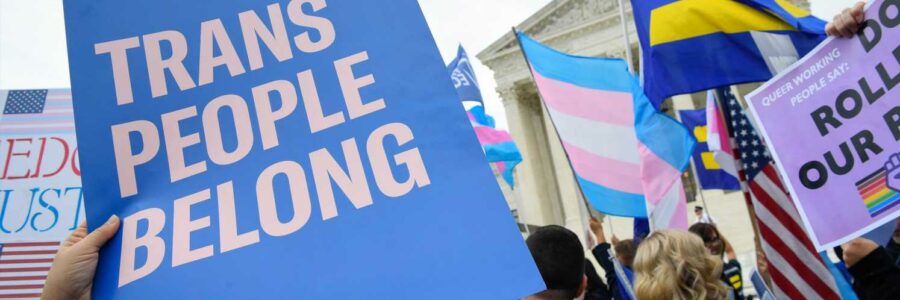
For LGBTQ employees of color, sexual orientation is the biggest source of discrimination in the workplace
While race and gender remain prime targets for bias, people of color who are also gay, lesbian or bisexual say sexual orientation is the biggest driver of discrimination they face in the workplace, according to a new study shared exclusively with USA TODAY.
Among Black LGB employees, 34% said they believed sexual orientation was the main reason for the discrimination they experienced on the job, compared with 36% of Latinos, 42% of Asians and 32% of Native American workers who felt the same, according to a survey conducted by the IBM Institute for Business Value (IBV) and Oxford Economics.
“We found across lines of race that there was agreement …sexual orientation was the biggest liability in terms of the discrimination experienced,’’ says Deena Fidas, managing director and chief program and partnerships officer for Out & Equal Workplace Advocates, which collaborated with IBV on a related survey.
A recent wave of anti LGBTQ+ legislation may be a key reason some workers see such discrimination as their biggest threat.
State lawmakers have introduced more than 250 bills this year, according to the Human Rights Campaign, including legislation that would prohibit transgender students from taking part in sports or bar teachers from talking about the LGBTQ community in the classroom. Eighteen of the bills have become law or are waiting for a governor’s signature.
Protestors and supporters gather in front of the U.S. Supreme Court on Oct. 8, 2019 in Washington as the justices hear three challenges from New York, Michigan and Georgia involving workers who claim they were fired because they were gay or transgender. (Photo: Jack Gruber, USA TODAY)
“In the United States … we still don’t have consistent federal civil right protections on the basis of sexual orientation and gender identity,” Fidas says, adding that while there is still more work to do to ensure equity along lines of race, gender and ability, there is at least a basic legal framework prohibiting discrimination in the workplace based on those characteristics. “The LGBTQ+ community simply doesn’t have that.’’
Race, gender, still are factors
Still, LGBTQ+ employees say they often face biases aimed at multiple aspects of their identity. And for people of color, who felt sexual orientation was the primary reason they encountered discrimination, race wasn’t far behind.
Among Black employees who identified as gay, lesbian or bisexual, 27% said race was the main driver of discrimination in the workplace, the most of any group. That was compared with 22% of Latino employees and 17% of Asian workers who felt the same.
Getting ready to return: Transgender people transitioned during COVID-19 and are bracing for a return to the office
Not a safe space: Top platforms are unsafe for LGBTQ community, new report says
Meanwhile, 29% of Native American employees said that gender was the primary cause of their experiences with discrimination, second only to sexual orientation.
Layers of bias
Employees of color believe the combination of biases they face hinder their ability to rise in the workplace.
While 50% of those who were lesbian, gay or bisexual (LGB) believed people who share the same race, gender and sexual orientation as them were less successful than Americans overall, 70% of African Americans who identified as LGB felt that combination of traits was an obstacle.
Meghan Stabler says that as a transgender woman, her current company's acceptance means she doesn't have to wrap herself in a protective shell. (Photo: Meghan Stabler)
Among Native Americans, the number dipped slightly to 67%, while 57% of Latinos, 56% of Asians, and 18% of whites who were LGB believed people who shared those same three characteristics were less successful.
During pandemic, work-life balance was a particular challenge
Employees who identified as lesbian, gay or bisexual also had a more difficult time juggling remote work with their caretaking responsibilities during the pandemic, with 43% saying it was a challenge as compared with 34% of non-LGB workers.
That may be because employees who hid parts of their identity at the office now found themselves having to put their home life on display via Zoom, says Ella Slade, IBM’s Global LGBT+ Leader.
“You see their partner in the background, or a rainbow flag hung in the home,” Slade says. “That can add a lot of stress.”
Or, an employee may have been “out at work,” but during the pandemic they quarantined with friends and family who were not aware of their identity or gender expression. “That creates difficulties,” Slade says.
Businesses have stepped up
But the business community has taken concrete steps to be more welcoming and inclusive, LGBTQ+ advocates say, partly because their employees demand it.
Nearly nine in ten workers say their employer or organization should be a stronger public supporter of LGBTQ+ inclusion, according to IBV, which held an event in the spring with Out & Equal and Workplace Pride to gain insights about the experiences of the LGBTQ+ community.
Meghan Stabler has seen the difference between working for a company that is uncomfortable with her expressing her true gender identity, and one that is accepting.
After she began transitioning in 2004 while working as an executive for a tech company in Houston, Stabler was gradually stripped of responsibilities and demoted.
“I wasn’t allowed to meet with customers anymore,’’ she recalls. “I wasn’t allowed to be the executive that was talking product strategy … There was a fear if I did so, we would lose customers.’’
When Stabler began looking for a new position, she continued to struggle, barely getting a call back as she applied to roughly 65 positions over two years. But in 2018, she was hired by BigCommerce, an ecommerce platform, and she felt liberated.
“I don’t have to have a layer of protectiveness or shell around me,’’ she says.
Despite the struggles she previously dealt with, Stabler says “I’ve been lucky. I have white privilege… It is detrimentally worse for Black trans people in the workplace.”
To create equitable workspaces, businesses should make sure the corporate leadership pipeline includes people who represent the LGBTQ+ community, Slade says. Communicating and enforcing anti discrimination policies, incorporating practices such as the recognition of an employee’s chosen pronouns, and advocating for civil rights legislation are also key.
When a company takes a visible stand against legislation that would ban people from using a bathroom that corresponds with their gender identity and similar proposals, “it sends a huge message,” Slade says, “not only to those lawmakers and local governments, but to your own employees.”
Follow Charisse Jones on Twitter @charissejones
Source: Read Full Article
